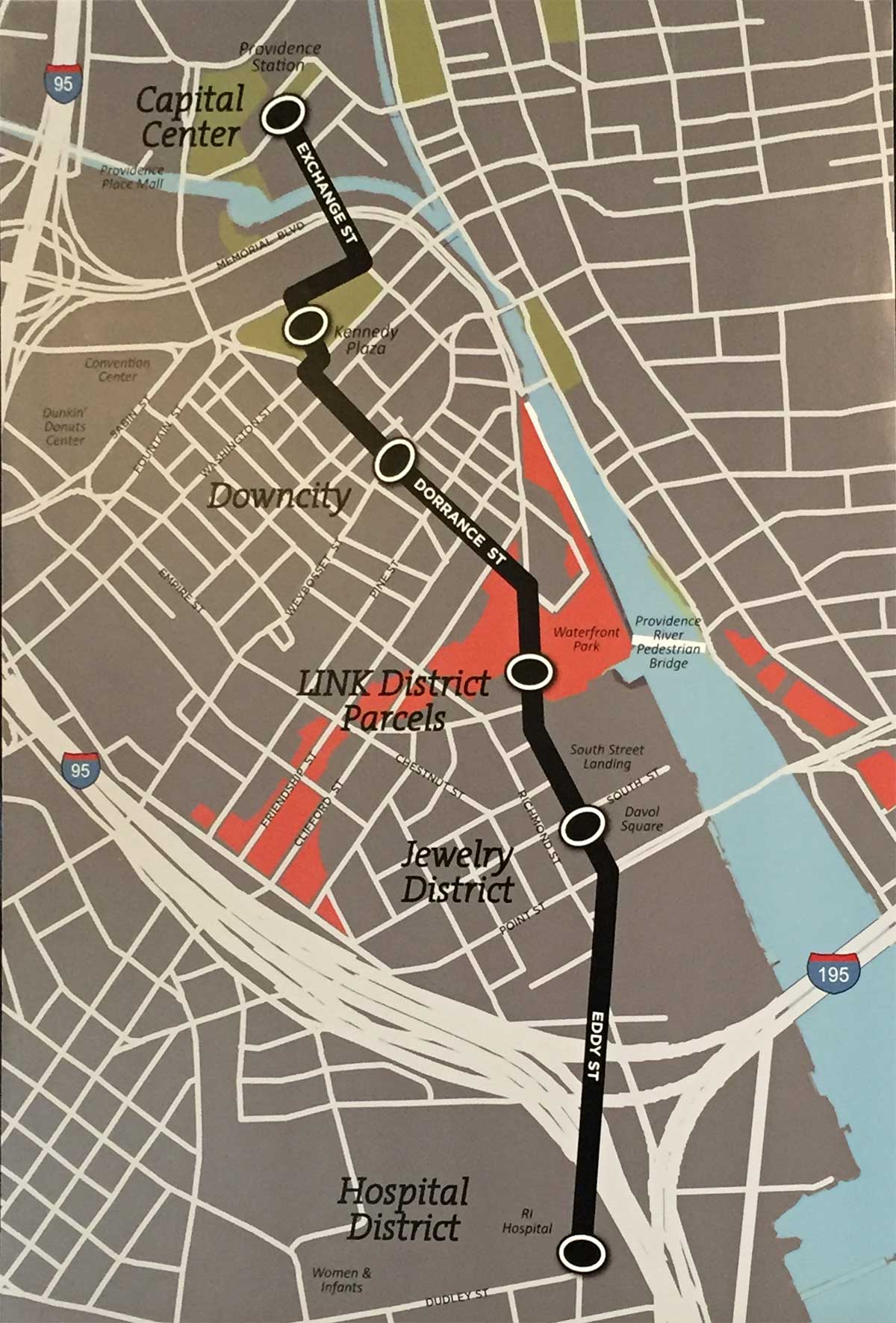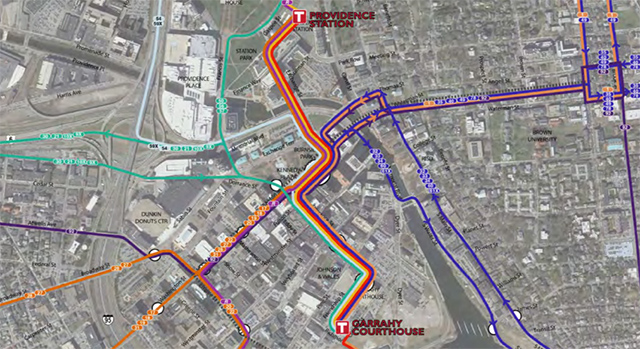This post will be about Bus Rapid Transit in downtown Salt Lake City, and what I think it should be like.
To start, here is good article about making good transit rather than flashy transit:
No-Nonsense Transit in Rhode Island
http://transitcenter.org/2018/02/13/...-rhode-island/
What happened was this: Providence asked the Federal Government for $125 million to build a downtown streetcar line. The government gave them $13 million. This put the streetcar out of financial reach, so instead they went with a BRT line through the core of downtown.
Here's the thing though: It isn't reserved for just one bus line with a flashy name. ALL buses entering the downtown corridor will use the faster lanes and high-quality stations. The map looks like this:


Details from the article:
Quote:
|
By extending routes through downtown and consolidating a large portion of RIPTA’s transit service on one path, buses will run every five minutes between the Providence Station, through the downtown core, and to the Ocean State’s largest hospital. The upgrade to transit frequency will be accompanied by bus lanes, shelters with real time information, wider sidewalks, and priority for buses at intersections. 9,000 riders are projected to use the service, for the cost of 17 million.
|
Basically, they made all the improvements usually associated with a streetcar line, but didn't include the streetcar. Instead they used a much "less-flashy" bus that puts function over form:
Quote:
|
As RIPTA’s interim planning director Greg Nordin states, “while possibly lacking in ‘flash,’ [the projects] offer significant improvements to RIPTA’s operations that assist in creating a more functional system.” And the city and transit system dodged the bullet of building a costly white elephant along the lines of Atlanta’s downtown loop, D.C.’s H Street streetcar, Salt Lake’s Sugar House Line — the list goes on.
|
Emphasis added. It's always disheartening to hear Salt Lake City listed as a bad example, even if it is true that our S-Line is an embarrassment to the concept of streetcars.
I've come to adopt the philosophy of 'let buses be buses, let trains be trains.' What I mean by this is this: don't force a system into the role of another one.
Streetcars were great back in the day when streets were dirty, muddy, and filled with manure. There were real advantages in speed to be gained by using steel tracks in the streets. People built and rode streetcars because they were the fastest way to get around.
Enter the car and city governments began upgrade streets so that cars could travel faster on them. With smooth, fast, paved streets becoming commonplace, streetcars began to be replaced with buses. As early as the 1920's Salt Lake City's streetcar system was already in decline, and began experimenting with trolley-buses:

That is a picture of a trolley converted into a bus and run by the trolley company. It's even painted to look like a trolley. But it doesn't use tracks, it uses the paved road. Because why should a private company pay for a surface to run on (trolley tracks) when the government is subsidizing an equally good road? There is no reason. The trolley companies knew this, and were trying to get out of the streetcar business as fast as they could.
The Great Depression and World War II delayed the downward trend of trains in the street, but by the late 40's the trends resumed and our streetcar system was removed.
My point in retreading this history is that it isn't the trains in the street that provide the value, it is the transit. It is the utility that the transit provides that makes it popular. A bus not only
can be better than a train in the street, but it actually
is better than a train in the street because it makes use of the environment around it - the street.
Salt Lake City is currently considering a downtown streetcar along 200 South. This would cost millions of dollars and provide utility only along its length and immediate surroundings. It would be good, but I think there is a better way to go about transit on 200 South.
I propose that along 200 South, from 400 West to 700 East, a high-frequency Bus Rapid Transit system be built. This would have exclusive bus lanes in the middle and raised median station platforms that look and act exactly like the TRAX platforms on Main Street.
This corridor would be used by all buses entering the city from the east or west. Buses would continue past the end of the BRT line and then become normal buses, headed to the University of Utah, down 700 East towards Murray and Holladay or wherever, or past Salt Lake Central Station and out to Redwood Road.
Look to my downtown transit map for a full plan. Here's a taste:

Another route to get this treatment would be State Street. I have a BRT line run down the median of State Street from 9th South up to North Temple, then curve over to the North Temple Bridge TRAX station. This line would handle routes arriving from the north and south. These exclusive bus lanes would ensure buses would never be stuck in traffic, and that the experience of catching a bus downtown would be just as pleasant as riding any rail line.
Some downsides would be that UTA would need to buy all its new buses with doors on both sides, so that the buses could use the BRT lanes downtown and act like regular buses in the less-urban areas of the valley where BRT makes no financial sense. But compared to the cost of buying all-new streetcar vehicles, it is still cheaper to replace some buses.
I never thought I would be against streetcars, but with all the thought I've put in the east-west commuter rail lines, I think there is a better use for rail transit funds than for building trains in the existing streets. Rail transit is not an old or antiquated technology unless we use it in old and antiquated ways. Since we have such nice wide streets already in Salt Lake City, let's use a vehicle designed to operate in the streets - bus rapid transit - and leave the trains for the dedicated routes they excel in.



